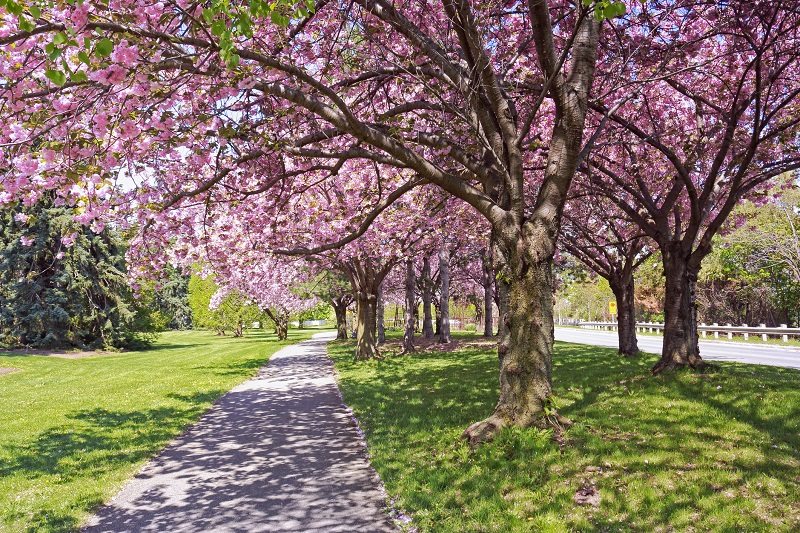Introduction
The winter season is harsh. Even if your trees are adapted to the snow and strong chilly winds, they go through a lot of stress. That’s why you need to care for them during the spring season so that they can heal, recover and bloom with vigor. You can search for “tree service near me” and hire professionals for the job or do it yourself. Here’s how you can approach springtime tree care.
The Discussion
- Check overall health – Tree care always starts with an inspection, irrespective of the season. Look around and inspect your trees for damage that may have been induced during the winter season. It may be physical damage or symptoms of a disease. As the spring season inches closer and snow melts away, trees should start growing new leaves and start blooming. If that’s not the case, then something may be wrong. It’s alarming if the top(crown) looks thinner than the rest of the tree.
During the winter season, winter storms and other such events may cause excessive amounts of snow to seep into the soil and completely ruin drainage. When that happens, the roots absorb way more water than they need. In that case, tree leaves may turn yellow. On the other hand, if you find bark wounds or cracks on the tree, it may be a sign of decay and requires the expertise of a local arborist.
- Check for pests – Depending on the tree species, geography, and local climate, different trees may be targeted by different types of insects. That’s why you need to consult your local arborist to draw a list of insects you need to watch out for. While most pests target trees, some may even harm humans.
For instance, if you find Oak Processionary moths feeding on oak leaves and try to get rid of them without precaution, you may get rashes and suffer from respiratory issues. On the other hand, insects like spider mites and aphids can be driven away with a simple blast of water from the garden hose. Apart from insects, you also need to check your tree for common fungi.
- Cleaning – Once you’re done inspecting the tree, it’s time for some cleaning. You simply need to get rid of the debris, dead leaves, rain, snow, winter protection, and decor around your tree. Start by removing lights and other decor items from the tree. They can impede the growth of the tree and should only go up during the dormant winter season.
After you get rid of the decoration, start removing snow, rain, and all types of debris around the tree. When that’s done, you need to start weeding the space around the tree. This is necessary for the next steps of springtime tree care. The space around your tree should look as clean as possible when you’re done.
- Mulch – When the space around the tree is cleaned up, you need to start mulching. You can make your own mulch by chipping and shredding tree limbs and dead leaves or, buy some from the store. While laying mulch start at the base of the trunk and make sure to lay a thick layer of around 3 to 4 inches. This may seem wasteful, but it’s not.
That thick layer of mulch discourages weeds, pests, and fungi and protects the most important part of the tree. Apart from that, the mulch also helps the tree to retain more water by shielding the ground from the heat of the sun. The mulch itself also holds more water and prevents it from running off. That thick layer also acts as a safety precaution against the blades of the lawnmower.
- Water – As the spring season progresses and temperatures start climbing, it’s important to make sure that your tree doesn’t dry out. You need to water your trees thoroughly throughout the spring season. However, different trees would require different amounts and types of watering depending on how well they are established.
If you have a young tree, water close to the trunk since the roots aren’t established deep enough. As long as the tree is less than 3 years old, the roots aren’t too spread out. On the other hand, if you have a well-established old tree, water it in a wide circle around the trunk. This helps to water those spread out roots more efficiently and reduces the risks of diseases. It’s also important to water trees more deeply instead of doing it frequently.
- Prune – Early spring is the ideal time for pruning since most of the trees are still dormant and with fewer leaves, you have better visibility. There’s no cold wind or snow to impede your pruning routine either. Start by removing extra stubs from old limbs and get rid of all diseases and dead branches. You also need to cut back branches that rub against each other.
While medium and small-sized trees can be handled by homeowners with regular pruning tools, large trees should be left to professionals. In the best case, you may injure a large tree and invite diseases and in the worst case, you may damage your home by cutting a limb the wrong way.
- Fertilize – Fertilizing is the final step in springtime tree care. Since spring is the season of blooming and growth, it’s the perfect time to add more nutrition to the tree’s palate. While most plants with thick wood store nutrients from the last year, fertilizers can always help deliver a little boost.
However, you need to fertilize properly so that you don’t end up harming the tree. For large trees, provide around half a pound of nitrogen per inch of diameter. For small trees, a quarter of a pound should be good enough.
Conclusion
Maintaining large trees in optimal shape and helping them recover after the harsh winter is a tiring process. Springtime care requires a lot of hard work, effort, and patience. Fortunately, you can outsource that job to professionals by searching for “tree service near me”.




